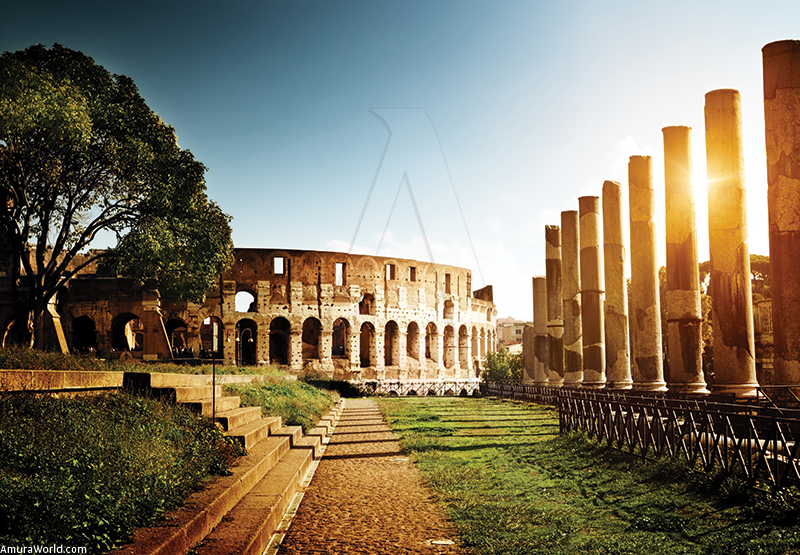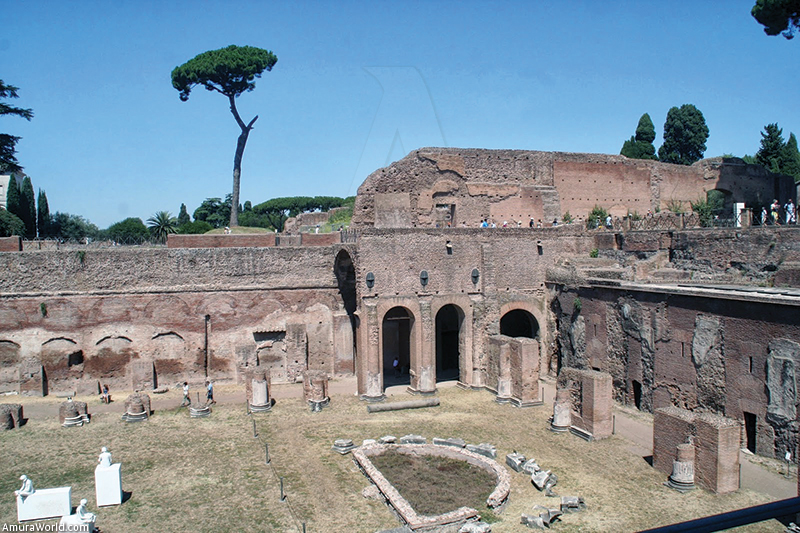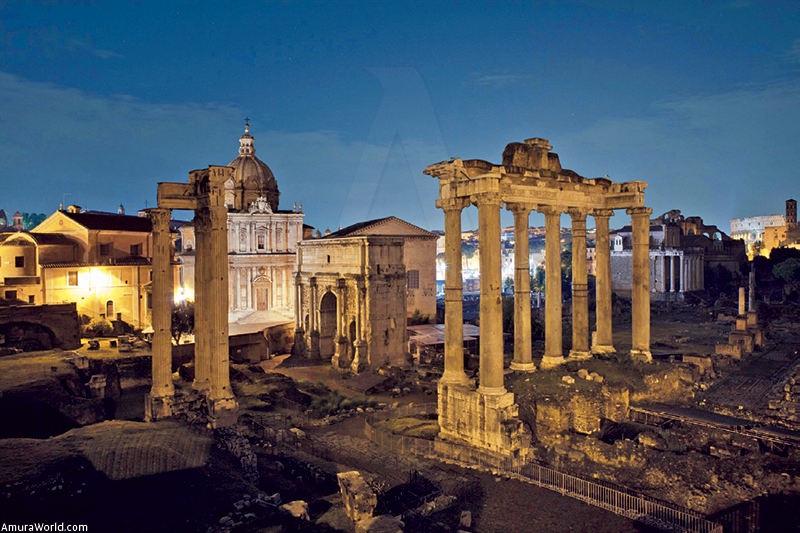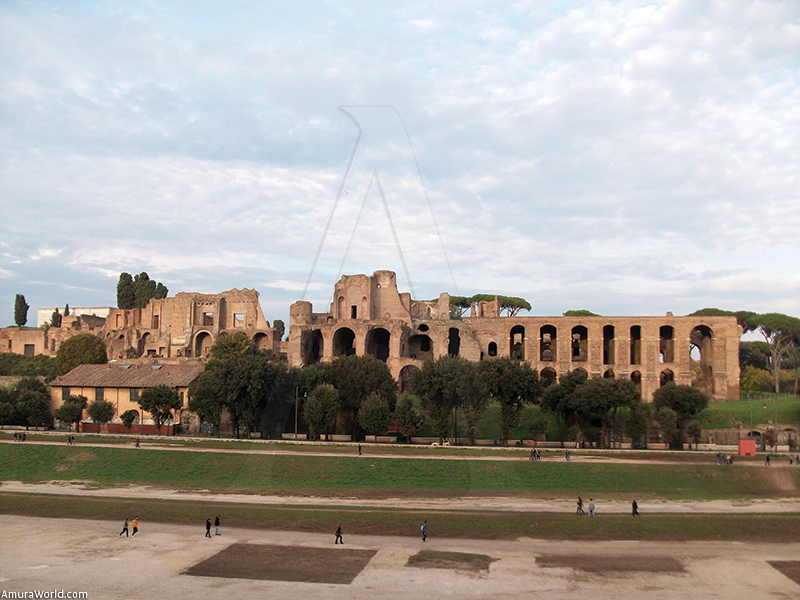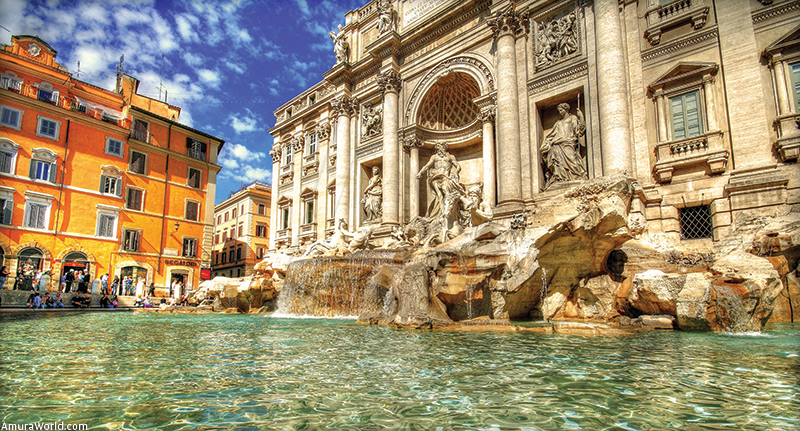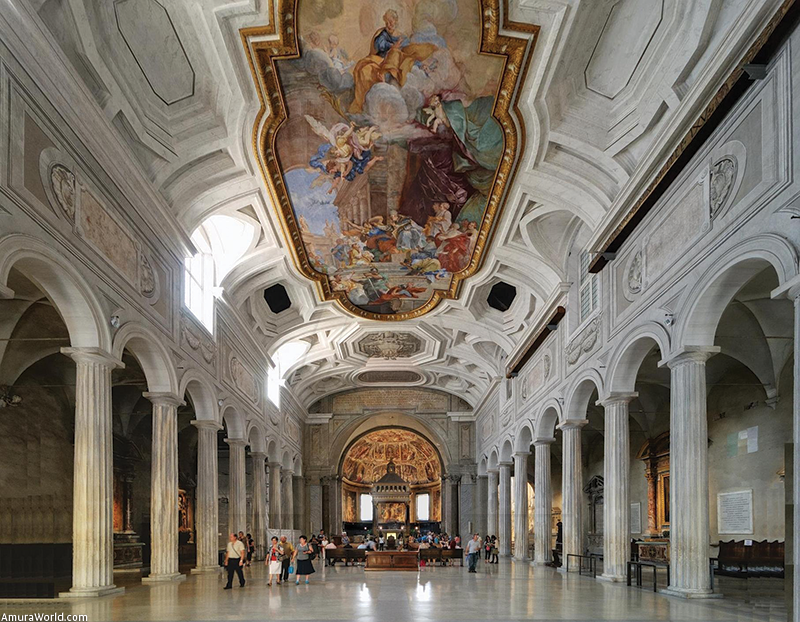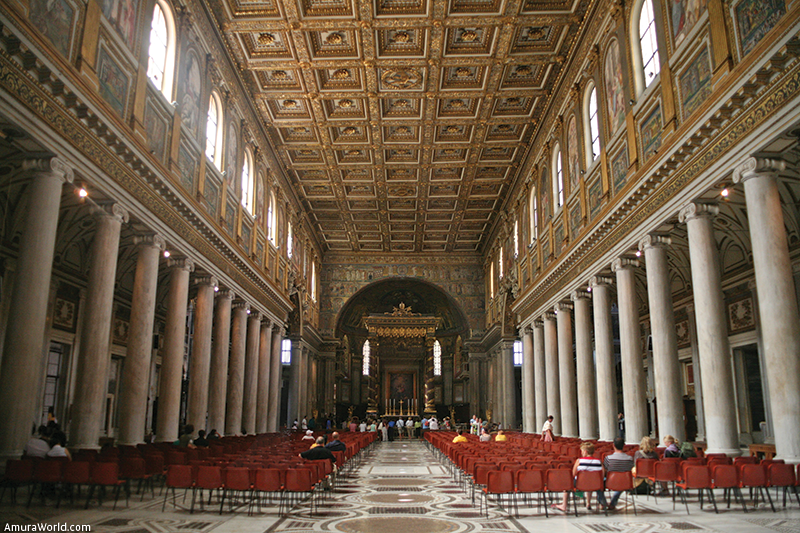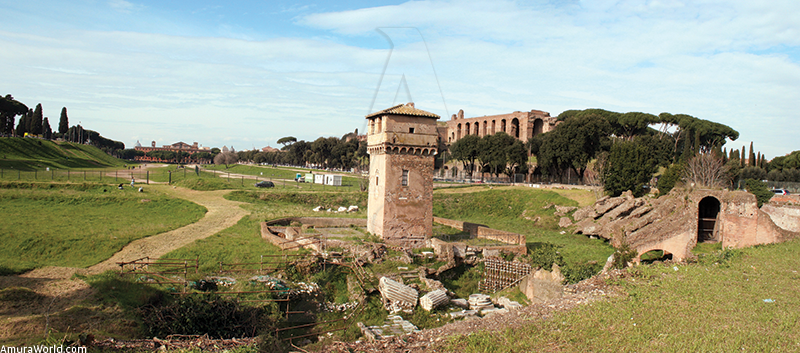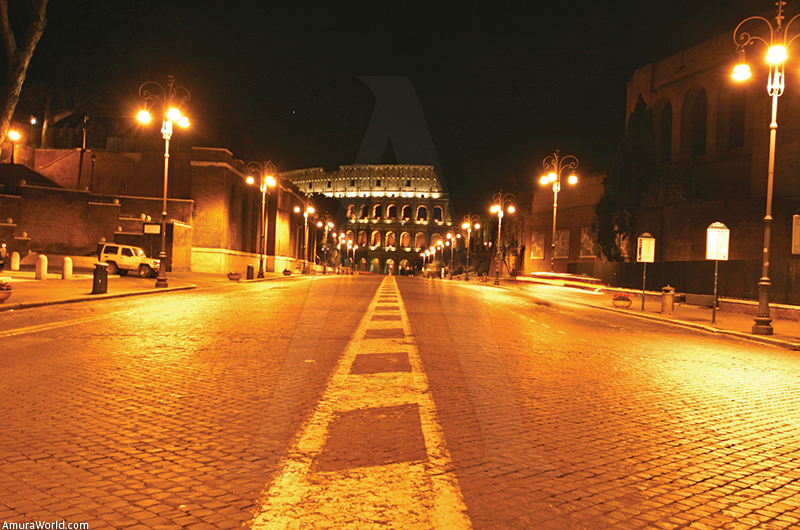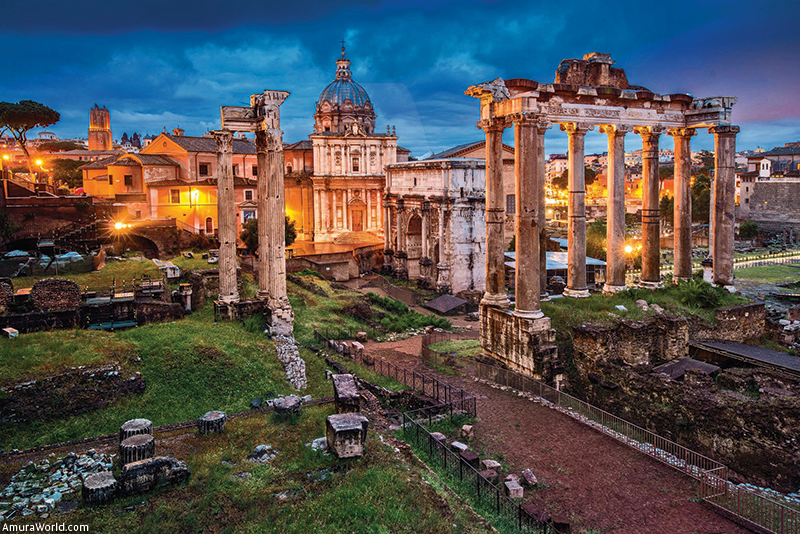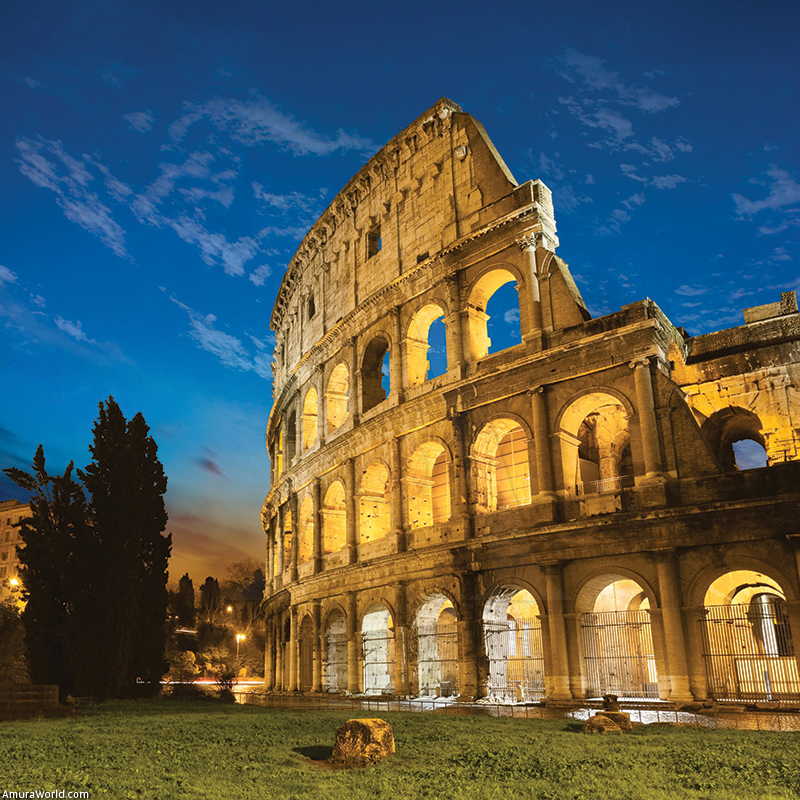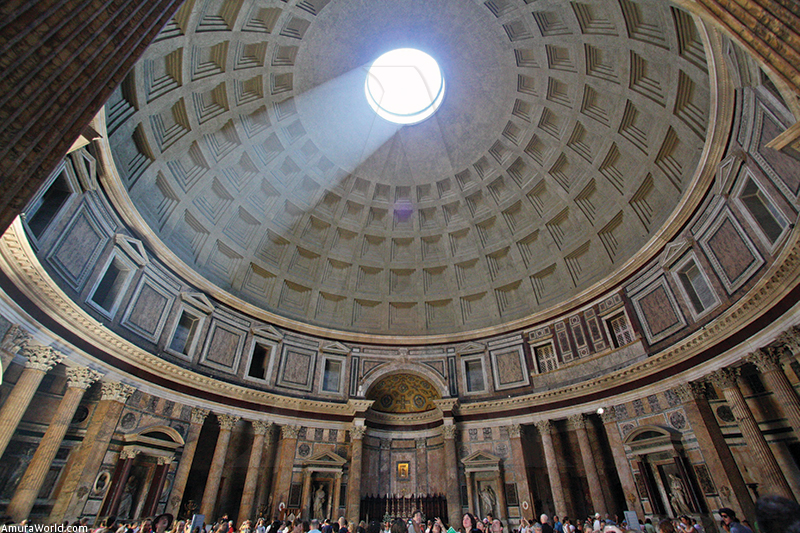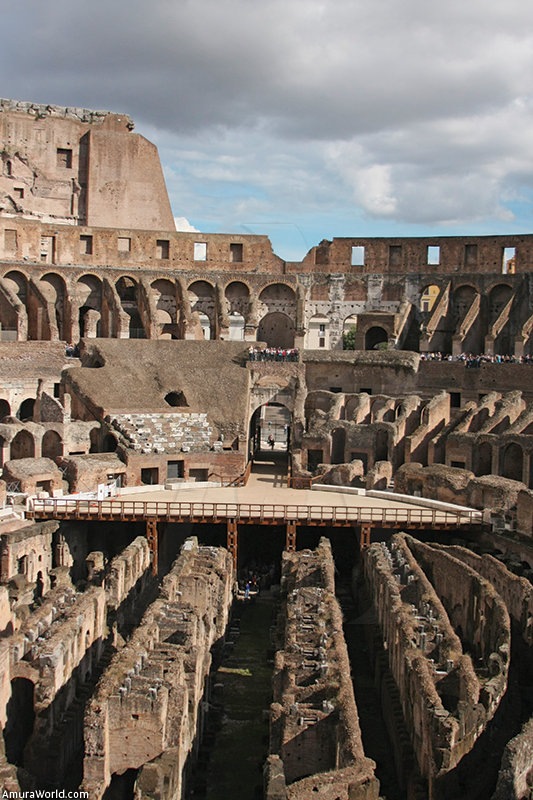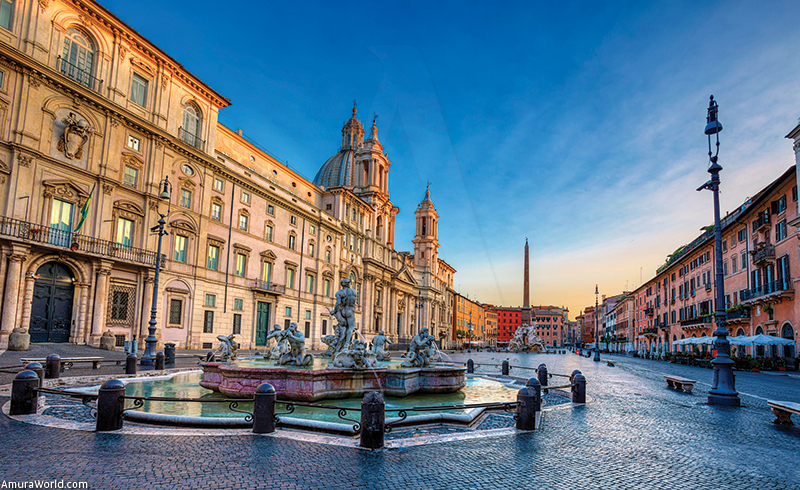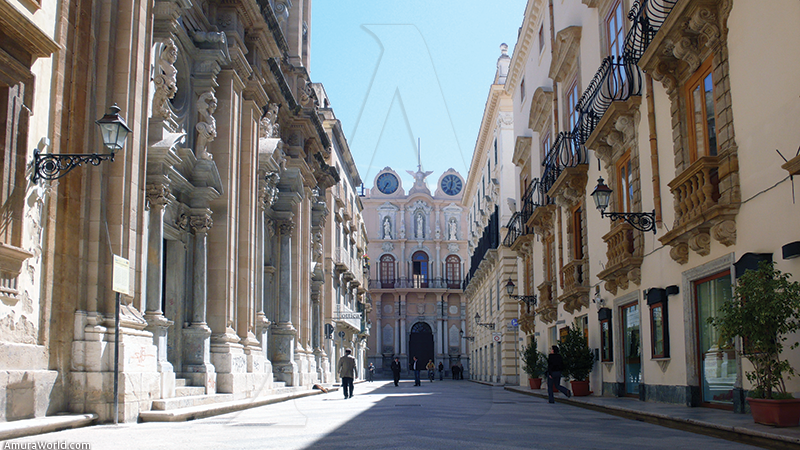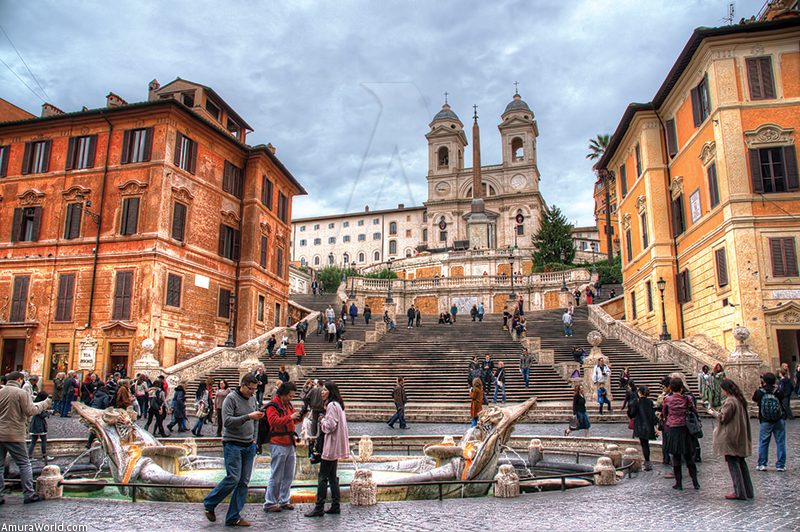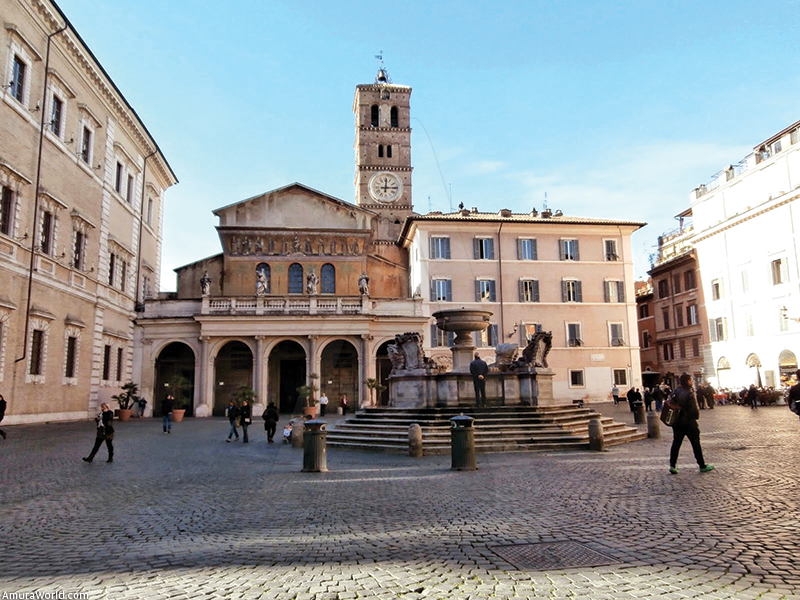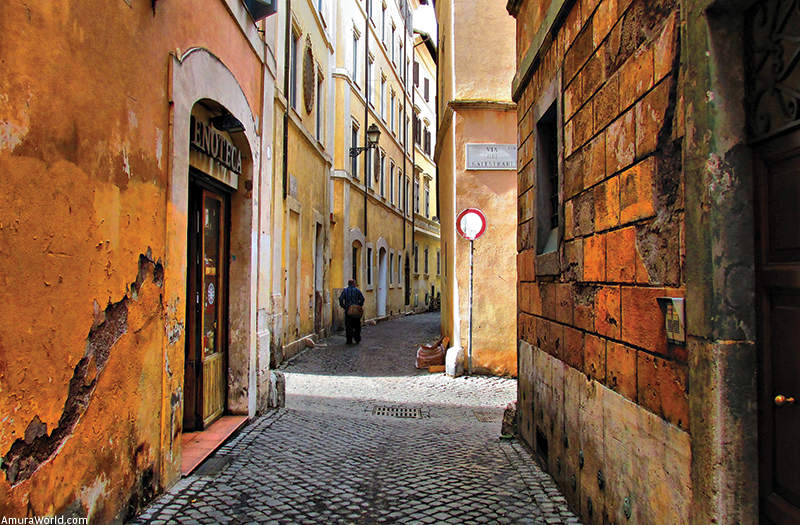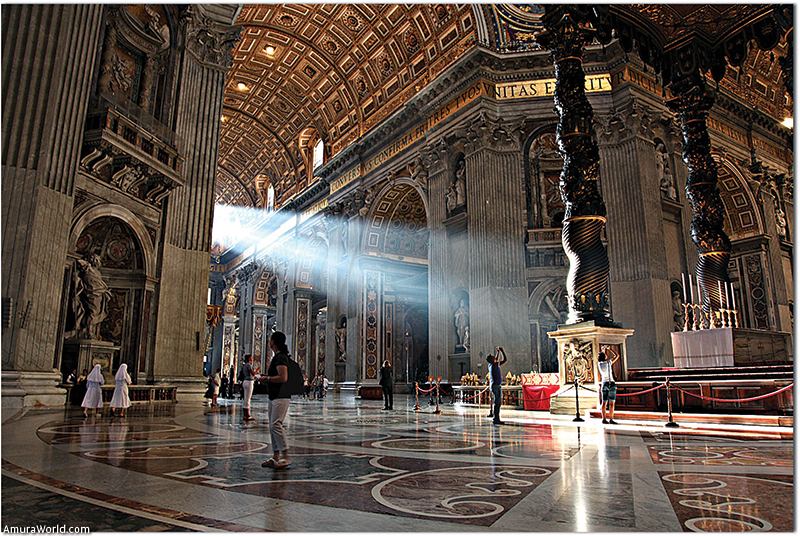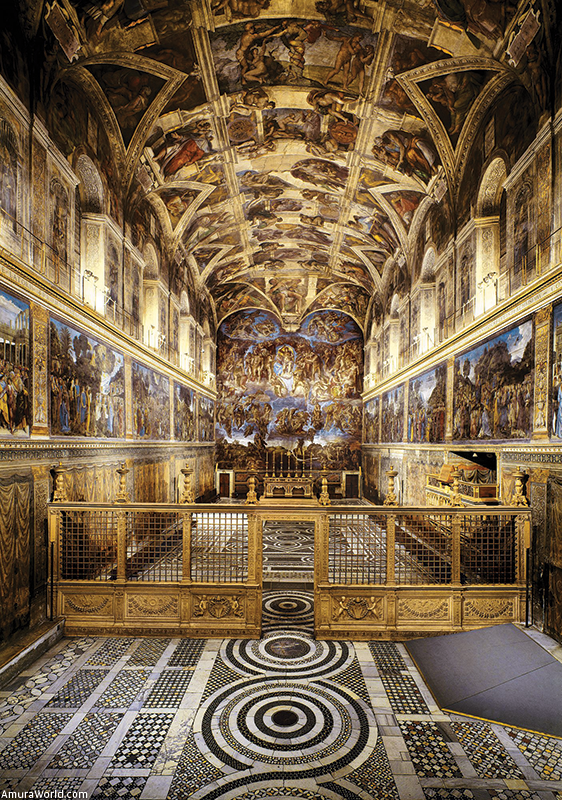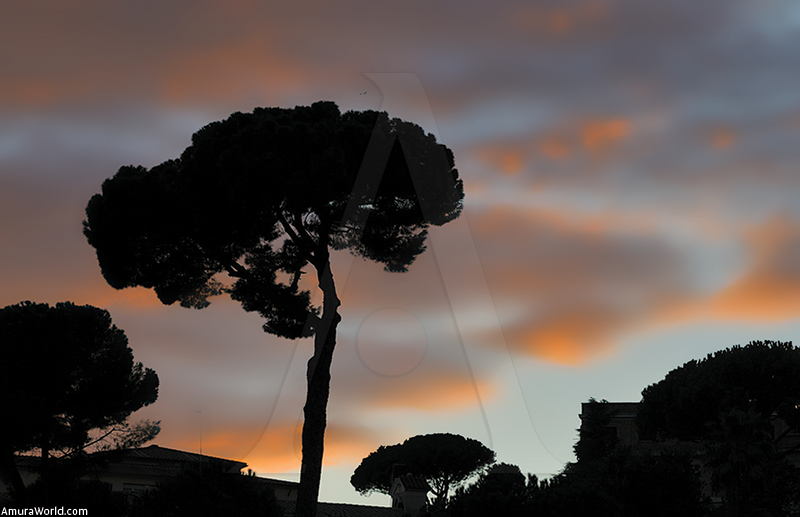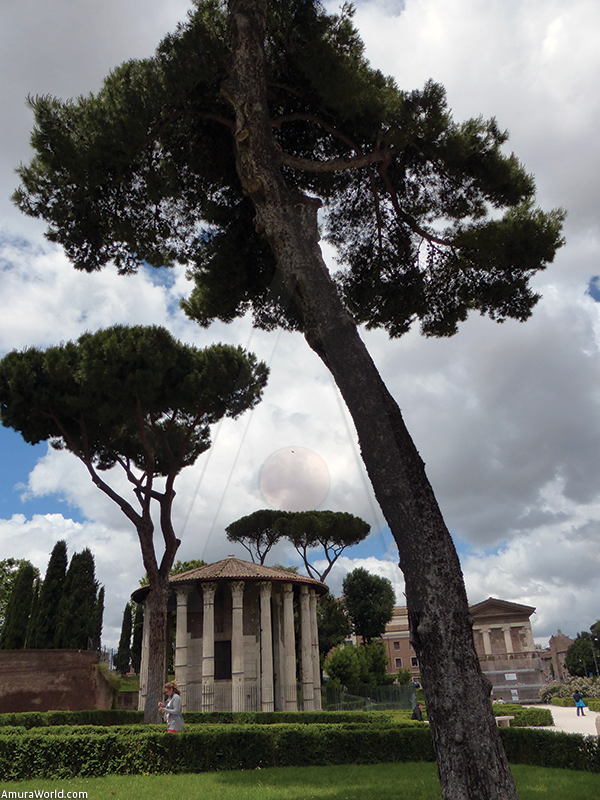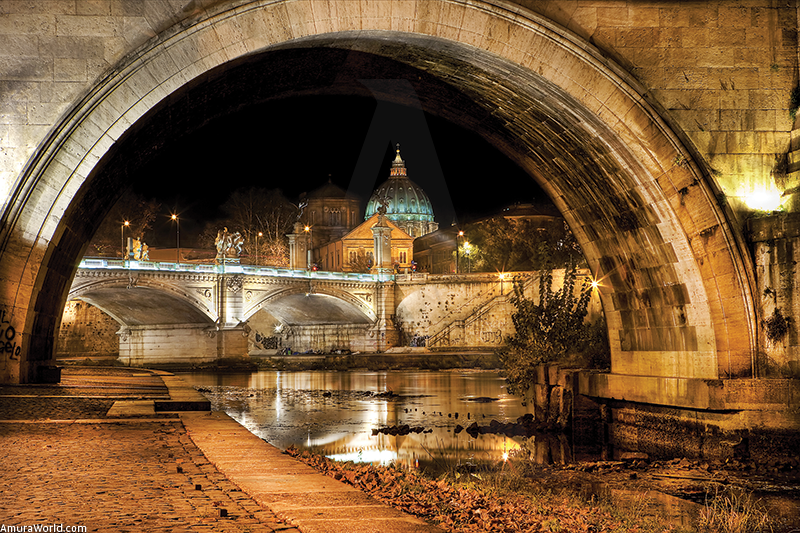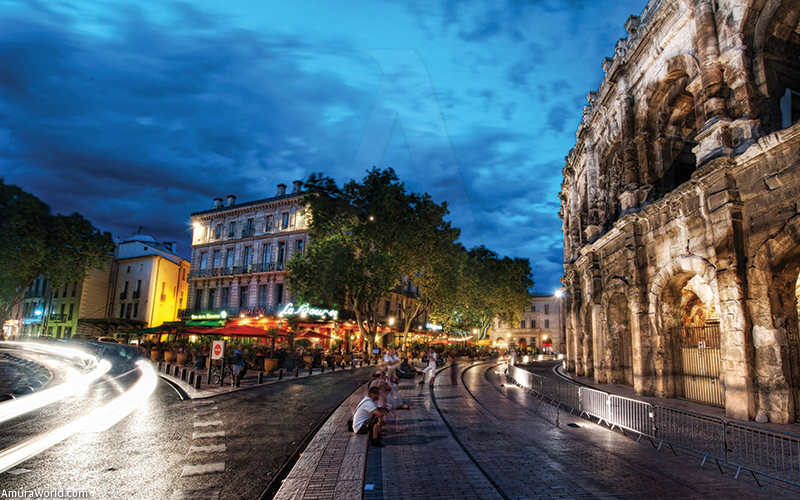So much has been said about Rome and yet so much left to say…
The Eternal City is known in this way not only due to its ancient history nor for being one of the first big metropolis of the world, it is nicknamed in this way because today it remains as beautiful as it was centuries ago. Rome is the cradle of art and architecture, the home of great designers, the muse to a many artists and the headquarters of the Catholic faith.
Some writers even describe the cite as a lover, due to it possessing a most special charm; any given day you fall in love with its beauty by walking through its cobbled streets or you feel impassioned with its detailed architecture, it is also possible that you feel moved by its church temples or that its exquisite cuisine will seduce you with her pasta, wines, pizzas, ice cream or tiramisu in some hidden and remote trattoria. Once you fall in love, it is really hard to leave it behind, she is demanding and jealous and it has that beauty and strength that captivates everyone. In Rome it is said: “visita Roma e poi muori”, which means: “visit Rome and then you can die”.
Knowing it is like being inside a living museum, only traveling by its streets on foot you can sense its vibrant history, allow yourself to be rocked by the Colosseum, the Roman and Imperial Forums and of course, the wonderful fountains and sculptures that represent mythologies and legends of other times. One of the most captivating features of the city are its golden sunsets over the domes and roofs visible from any of the balconies of the city, like the Pincian, the Janiculum, or the Giardino degli Aranci, that sit over some of the hills, among which this magical city was built upon.
The Origin of Rome
Rome was founded towards the end of the VII century BC. in the Palatine, one of the seven hills at the center of the actual city. According to legend, after Numitor, King of Alba Longa, would have been overthrown, his brother Amulius forced the only daughter of Numitor into becoming a vestal virgin so she could not have any offspring, but Mars, God of War, fell in love with the beautiful girl and seduced her to later sire two twins: Romulus and Remus.
At the moment of giving birth the uncle of the beautiful girl, full with wrath, sent for the twins to be killed, but the one charged with ending the life of the infants, wasn’t able to bring himself to do it and decides to abandon both children in a basket on the Tiber river. The current drags them down to a swamp in the middle of the Palatine and Capitoline hills, where a she-wolf found them, took them to a cave and instead of devouring them, it breastfed them and cared after them, until the shepherd Faustulus and his wife found them. The noble couple decided to raise and protect the children until they would grow up and it was then that their true identity was revealed to them. Romulus and Remus decided to take revenge from the uncle of their mother and give the throne back to their grandfather.
The young boys wanted to rule, so they agreed to create a new city that would be established in the place where the she-wolf had found them. Usually the rules stated that the first born would be the King, but in this case both had born at the same time, because of this they went down to the place where the shepherd had found them with the she-wolf to determine where it would be established and who would be the King. Romulus wanted to name his city Rome and set it up in the Palatine mount, and Remus wanted to name it Remoria and to found it on the Aventine. They chose to leave it to fortune; whoever got to see more vultures fly would be the King of this new city. Remus saw six and Romulus saw twelve that would turn him in to the winner but Remus, unhappy with the result decided to get to the last consequences even by means of violence. The fight ended with the death of Remus and with Romulus as the first King of Rome, founded in the Palatine. This explains why up to this day a symbol of Rome and of their inhabitants, is the scene of the she-wolf breastfeeding the Romulus and Remus twins.
The Rape of the Sabine Women
The first problem that Romulus had to face at the beginning of his rule was that Rome started to get populated by immigrants of neighboring villages, but among the new inhabitants there were no women, and therefore was afraid that his city would only live for one generation. Thus Romulus sent some emissaries to bring women from the neighbor villages, but they were rejected. Then he decided to hold a celebration and games with the pretense of honoring Neptune and invited all neighboring towns, among them were the Sabines, who took their daughters to the feast, unsuspecting that everything was a plot to rapt them. This is the way Romulus gave birth to the city of Rome.
The Seven Hills of Rome
The center of the city was delimited by seven hills: Palatine, Capitoline, Caelian, Esquiline, Quirinal and Viminal, currently also the Janiculum, Vatican and the Pincian.
The Palatine mount is located between the Circus Maximus and the Roman Forum. After being inhabited by Romulus, it became one of the most attractive and desired places to live and build palaces by much of the most important and influential inhabitants of ancient Rome due to being located on the centermost place of the city.
In the Palatine, remains of Romulus’ civilization are still found dating back to the IX century BC, also the Residences of the Emperors Augustus, the one of his wife Livia, Tiberius Domitian, the Temple of Apollo and the Farnese Gardens can be visited.
Another of the most important hills is the Capitoline mount, where The Jupiter Temple is located, it was the center of the Roman world and the stage of the most sacred political and religious ceremonies. It symbolizes the authority of Rome as Caput Mundi, head of the world, by which this type of government is the precedent model for all capitalist civilization. The City Hall and the Senate of Rome are located here, in a complex of buildings from the Renaissance designed by Michelangelo.
The Palazzo dei Conservatori is located in the Piazza of the Campidoglio, now the Capitoline Museum, which at the end of the Middle Ages was the Assembly of the Magistrates. In this palazzo that is now a museum, it is possible to see sculptures of the Classical period, just like paintings from the Renaissance as well as from the Baroque periods.
Another of the most representative landmarks of Rome, that is also located in the Capitoline, is the Vittoriano, named like this after Victor Manuel II, who was first king of the Unified Italy. The construction of this landmark was started in 1885 y and ended in 1911. It is also nicknamed as the Wedding Cake due to its exaggerated size, the white color and the lushness of its Neoclassical decors. It later served as a fascist landmark during the political propaganda and government of Benito Mussolini, since around this monument, in Piazza Venezia, Mussolini used to gather big masses of citizens to give his speeches. It was chosen by the Duce because it is located exactly in the center of the city, surrounded by the seven hills.
The Quirinal Hill is another of the seven, here great emperors built structures and palaces, like the building of the Quirinal, which later would be acquired by the Popes or by rich families of the XVI century, later were used as residence of the Kings and is now the house of the President of Italy.
Over the skirts of this hill one of the most famous fountains of the world is located: La Fontana di Trevi. It has been stage to romantic scenes in movies and love stories like La dolce vita, among others.
This majestic fountain serves as facade to the Palazzo Poli, now the National Institute for the Graphic Design and before that, property of Giuseppe Lotario Conti, Duke of Poli and brother to the Pope Innocent XIII, who acquired the property a little before the construction of the fountain.
La Fontana di Trevi, that marks the ending point of the Aqua Virgo aqueduct, was designed by the architect Nicola Salvi in 1730, he was commissioned with its construction by the Pope Clement XII by means of a contest, in which he was elected to build it.
The history of the aqueduct goes way back to the Roman Empire period when the Emperor Augustus, descendant of Julius Caesar, ordered its construction after a legend that tells of certain soldiers while coming back from a battle, lost and thirsty, encountered a virgin, who pointed them to a nearby water spring and the way back home.
At the side of Quirinal mount the Esquiline is located; the tallest of the seven hills and where the Basilica of Saint Mary Major is located, the largest church dedicated to Virgin Mary in Rome. It was built in the year 356 AC by the Pope Liberius, who had a dream in which Virgin Mary appeared before him and told him that he had to build a church for her in a place where he could find snow. On August 5 of the same year there was a snowfall in the Esquiline, despite being full summer, so the pontiff followed the orders from the Virgin and ordered the construction of the Basilica on her name. Later, in the year 440 AC, the Pope Sixtus III continued and concluded its construction giving it a greater scale than initially projected and a Baroque style. It has great relevance in Rome because it is one of the four papal basilicas.
Over the Esquiline, is also located the San Pietro in Vincoli church, that shelters the Mosses sculpture, that is one of the most impressive ones from the great Maestro and artist Michelangelo and the chains with which Saint Peter was held during his martyrdom.
The Esquiline keeps its essence of being a popular residence neighborhood since two millennia ago and now is also a gathering point among young people, mainly in the Piazza Madonna Dei Monti. It is full of bars and restaurants and many of them have the policy of using in their kitchens only zero kilometers produce which means all the produce used to cook, besides being organic, are also produced in the same region of the restaurant, and are seasonal in nature.
The Caelian mount holds one of the most ancient churches of Rome: The Archbasilica of St. John Lateran. It was initially built at the beginnings of the VI century during the Empire of Constantine, the first Roman Emperor to accept and introduce the Catholic religion. The appearance of this basilica has suffered several modifications through time, since it was destroyed two times by fires, nonetheless its form remains intact. Its facade and current appearance were designed by the Baroque architect Francesco Borromini. This is also one of the four Papal Basilicas, in which the maximum pontifex of the Catholic Church performs as Bishop and says mass.
And last, the Aventine mount closes the circle of hills that surrounds the Historical Center of Rome. Although mainly residential, there are some panoramic places or of historical interest. From it one can see one of the best views of the St. Peter’s Dome, of the Circus Maximus and of the ruins in the Palatine mount.
At the top is located the Garden of the Oranges, from where the St. Peter’s Dome creates one of the strangest optical effects, the further away from the balcony, the closer the dome seems to be and vice versa.
A few meters away from this park is also located the piazza designed by the famous architect Giovan Battista Piranesi in 1765 for the order of the Knights of Malta. From the main gate of this place, the Dome of St. Peter can be seen through its keyhole with a plant arcade as a backdrop for the spectacular view.
Also located here is La Bocca della Verità, according to legend it is said that it was used to know if a person was telling the truth by putting their hand inside of the sculpture, if they were lying they would lose their hand when the sculpture bit them.
The Circus Maximus is another of the representative places and is located in the Aventine. This park of oval shape used to be the largest stadium of ancient Rome. In it the races of horses with chariots would take place, and from those same chariots the contestants would fight to death to win the match. The Circus Maximus had a capacity for 300,000 spectators and although today only its ruins remain, it is still being used to gather large groups of persons, either for holding fairs, concerts or to celebrate the soccer players after winning a Gold Cup.
The artistic and architectural tendencies have been changing, but have always kept and taken back to the classical roots that distinguished them and with which they were known throughout the world during the days of splendor of the Roman Empire. It is because of this that Mussolini, during his government, proposes to retake all these classical elements by means of the art and the architecture, in order to give Italy and to the Romans in particular, their identity as a nation back.
In the thirties he creates a satellite city to Rome to hold the Rome Universal Exposition World Fair (EUR) to commemorate the 20th anniversary of Fascism. For this fair, different buildings were built that would evoke some Roman building, but providing it with a lineal form, more stylish and less ornamented as for example the Square Colosseum.
The Duce saw the artistic expression as a vehicle for political propaganda, as for means of it he could reach to many more places giving people something to talk about. It’s because of this that he urged and motivated painters, sculptors and architects to form a purely Italian movement: the Futurism.
This movement of young artists like Filippo T. Marinetti, Umberto Boccioni, Gino Severini, Giacomo Balla, and Antonio Sant’Elia reinterprets the classicism and breaks the aesthetic barriers of the painting and sculpture, to provide dynamism and life to the new works. In the Futurism the human body and its movement through space are thoroughly analyzed. In this detailed analysis exercise, the body and its movements get deconstructed until they become mechanical and systematized. A person was no longer seen as such, but as a part of a system and that system was the Fascism.
Rome is a living museum because the history of this city is lived and seen every day on the way back home, on the way to work, or on a strolling day with family and friends.
Piazza Venezia
It is the most central square and one of the largest ones. It is located between the Roman and Imperial Forums and the Capitol. In this zone many stores, restaurants, museums and sites of touristic interest are located.
A walk through:
-Via dei Fori Imperiali. It goes from Piazza Venezia up to the Colosseum. This street passes between the Roman Forum and the Imperial Forum. It is a very transited pedestrian walkway, specially by tourists, since from this street many of these ruins can be appreciated.
-Roman Forum. It was the political, trade and law center of ancient Rome. Here are ruins of buildings like: the Curia (Ancient Rome’s Senate and the place where the emperor Julius Caesar was assassinated), The Temple of Saturn, The Basilica Julia, Temple of Vesta, Temple of Romulus, Basilica of Constantine, Arc of Titus and the House of the Vestal Virgins.
- Imperial Forum. It is the extension of the Roman Forum. Its construction began during the Empire of Augustus (first Roman Emperor). In this Forum one can find: The Column and the Market of Trajan, the Forum of Augustus and the Forum of Nerva, among others.
- Colosseum. This is the largest amphitheater of Rome. In this place, gladiators fights would take place organized by the emperors as a way of entertainment for the Roman people.
- Via del Corso. It is the main commercial avenue of Rome. Starts from Piazza Venezia and reaches up to Piazza del Popolo. There are several stores and commercial premises throughout its 1.5 km in length.
- Fontana di Trevi. It is the largest and most representative of the Baroque period. Its dramatic style has always beckoned movie directors and tourists. It’s a tradition that visitors to Rome throw a coin making a wish to come back to this place.
Largo di Torre Argentina
In the center of this square one can find four ancient Republican Roman temples and the ruins of the Theater of Pompey. It is also known because the compound where these ruins are located is a place of refuge for cats.
A walk through:
-Pantheon of Agrippa. Is one of the largest buildings of the ancient times and that still stands since more than 2000 years ago. In the Roman times it was built devoted to all the gods, because of this, its shape is circular to give same importance to each one of them. In the year 608 AC the building was transformed into a church.
-Church of St. Ignatius of Loyola. Is a Jesuit Church built in 1626 in memory of St. Ignatius of Loyola. Even though the style of the church is Baroque, it is said that because of the poverty vows of the Jesuit Order, instead of building the dome as in the original design, they made the artist, Andrea Pozzo, to paint the dome and the main nave in perspective.
-Piazza Navona. No other plaza compares to the theatricality of Piazza Navona. Originally it was the stadium of Domitian, now it is one of the most representative places of the Baroque in Rome. On it, both the fountain of the Four Rivers of Gian Lorenzo Bernini and the Church of Sant’Agnese in Agone of Borromini are located. It is also the ideal place to have an aperitif or go to dinner in some of the bars or restaurants nearby.
-Campo dei Fiori. This Renaissance plaza, located between the Corso Vittorio Emanuelle II and the Tiber river, is also a commercial area and one of nightlife. In the morning it is a market dealing mainly in fruits and vegetables, in the evening it is possible to take on a promenade and visit its stores, while at night time it gets full of young people and nightlife.
Piazza di Spagna
It is one of the most famous of Rome because the best fashion stores and most prestigious hotels are found here. The peculiar staircase of the XVIII century garnishes the church of Trinidad dei Monti. It gets full of visitors the whole the year and specially during summer time as it is in this place that one can get one of the most wonderful panoramic views of the city.
A walk through:
-Via Condotti. In this street are the most renowned shops in the world of fashion. Here tourists and Italians alike gather to take a stroll in the evening or go shopping.
-Pincian. The Pincian is a balcony with line of sight to the city in the gardens of Villa Borghese. It can be reached from the top of the staircase of Piazza di Spagna, from the Piazza del Popolo or via the park of Villa Borghese. From here it is possible to get one of the most spectacular views of the Eternal City and its buildings.
- Piazza del Popolo. It is one of the largest platforms of Rome. It is located at the end of Via del Corso, in the part opposite to Piazza Venezia. The current design is a work of Giuseppe Valadier to receive and guide the pilgrims on their arrival to Rome in the XIX century. It has an oval shape and is the joining point of 3 streets: Via del Babuino, Via del Corso and Via di Ripetta.
Trastevere
It is the bohemian district of Rome. Its name means “behind the river” (tras tevere) because it is located across the Tiber river, by the Campo di Fiori. This plaza is full of life and offers visitors a great selection of bars and trattorias. Its narrow and complex alleyways between the ocher colored buildings make of the walking through this district an utmost pleasing experience.
A walk through:
-Piazza Santa Maria in Trastevere. It was designed by the architect Carlo Fontana in 1692. Here is situated the famous church Santa Maria in Trastevere, and is decorated with small mosaics over all its apse and facade.
-San Francesco a Ripa. In this church lived San Francesco d’Assisi when it was a hospice. Here the stone pillow and crucifix of this saint can still be found. The church also shelters the famous Ecstasy sculpture of Bernini.
-San Pietro in Montorio. In the patio of this convent of Spanish Franciscan monks one can find il Tempieto de Bramante, that was built over the top of the Montorio (mountain of gold) where St. Peter was crucified.
Vatican
The Vatican City, is the smallest country in the world and one of the six European micro-states. Its official tongue is Latin and has and covers an extension of 44 ha. It harbors the Holly See and its state head, the Pope. In this place is the St. Peter’s Basilica, that encompasses a 7% of the Vatican’s total territory.
A walk through:
-Piazza de San Pedro. This elliptic shaped plaza was designed by the architect and sculptor Bernini for the St. Peter’s Basilica. The two pathways of columns embrace the open platform, framing it to gather the multitudes of people. It can be entered from the Via Della Conciliazione leaving behind the Sant’Angelo.
-St. Peter’s Basilica. Was built in the place where Peter went through martyrdom and was buried. This church is one of the four basilicas where the Pope performs as Bishop. It represents the center of the Catholic faith and is here where great numbers of faithful travelers from around the world gather all year round.
-Museum of the Vatican. Here is one of the largest art collections of the world. This museum also holds the Sistine Chapel with the frescos of Michelangelo.
Climate:
The climate of Rome is mild very typical of the Mediterranean. In general, it enjoys of medium latitudes, warm and sunny summers and a smooth temperature on spring and winter. It is mostly humid due to it being close to the sea, the yearly relative humidity is 72 percent.
Rain season:
In Rome there is not a well-defined rain season, the months with higher probability of rainfall are February, April, October and November.
Daylight:
Rome is a city that enjoys sunny days even in autumn and winter seasons. The day has a yearly average of 12 hours and 14 minutes of sunlight. On daylight saving time the sunrises start at 6 am and sunsets at 8:30 pm and on winter the sun rises around 6:40 am and sets at 5:30 pm.
Text: Melissa Díaz ± Photo: GdeFon/ SCHN/ WMOFA/ SANDRO R.


